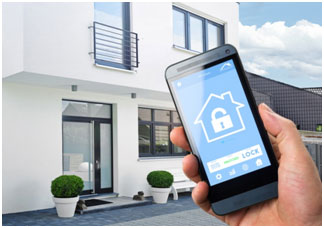 The idea of a fully automated living space has existed in popular culture for more than a century, but only recently has the technology existed to make our smart home dreams come true. Today, not only do we have individual smart devices catering to our whims, but we also have integrated systems that are easily controlled from a single app. Now, we can modify our homes’ temperature from halfway across the world; we can turn lights on and off, open and close windows, lock and unlock doors, and more at the push of a button; we can enjoy a home that is smart just for us.
The idea of a fully automated living space has existed in popular culture for more than a century, but only recently has the technology existed to make our smart home dreams come true. Today, not only do we have individual smart devices catering to our whims, but we also have integrated systems that are easily controlled from a single app. Now, we can modify our homes’ temperature from halfway across the world; we can turn lights on and off, open and close windows, lock and unlock doors, and more at the push of a button; we can enjoy a home that is smart just for us.
Yet, as smart home services become more affordable, many potential consumers are concerned about the functionality and security of the services. How do smart homes work, and are they safe?
What Is a Smart Home?
Essentially, a smart home is a house fitted with electronic devices connected to a central network, so users can control different aspects of their home with ease. To some extent, many homes have minimal smart functionality. For example, alarm clocks, garage door openers, and remote controls all provide similar features as newer smart home devices, but they lack the interconnection most smart home–lovers want. Further, some people have lights affixed to timers and schedules, so they will turn on and off automatically, but once again, the network tends to be limited. True smart home systems have a wealth of devices and appliances connected to one another and a central console, giving homeowners more power and freedom in their environment.
 What Technology Drives Smart Homes?
What Technology Drives Smart Homes?
The beginning of real smart home technology occurred in the 1970s with the development of X10. Using a home’s existing electrical wiring, devices can communicate — but typically only with the most basic of functions, like “turn off” or “turn on.” Worse, because so many devices are plugged into a home’s wiring, the lines of communication are often terribly noisy, interfering with messages and inhibiting actions.
Since then, several other smart home networks have been created. Most modern smart homes run on radio waves, which is how Wi-Fi, Bluetooth, and cellphones work. Furthermore, most smart homes use mesh networks, which means there are several ways a message can reach its intended device. There are two competing networks for this type of home automation tech: Z-Wave and ZigBee. Z-Wave utilizes an algorithm to determine the best path to a receiver, while ZigBee zigs and zags in search of an optimal path. The former is proprietary technology, meaning devices must have licenses to use it, while the latter is a platform designed using standards from the Institute for Electrical and Electronics Engineers, so any device-maker can use it free-of-charge.
As Wi-Fi has become more common, some smart home developers have begun pivoting to use wireless networks rather than radio waves. On one hand, this is easier for many homeowners, who tend to be more familiar with Wi-Fi. Plus, wireless networks are more flexible, giving homeowners more control. On the other hand, wireless devices have the same primary setback as the original X10: The network tends to be noisy with other devices, namely home computers. Thus, developers are beginning to integrate wireless connections into their mesh networks, which continue to rely primarily on radio waves and electrical wiring.
What Devices Are Available for Smart Homes?
When smart home tech was first available, only basic items like lights and garage doors could be controlled with any precision. Now, you can purchase all manner of smart devices and appliances to connect to your network. Some of the most common — and most useful — include:
- Security systems. Cameras as well as smart locks and alarm systems make homes more secure than ever before. Regardless of where homeowners go (and for how long) they can receive updates on their homes and know that authorities will be alerted if the system detects anything amiss.
- Heating and cooling systems. Because heating and cooling is easily one of the most energy-intensive activities inside a home, many homeowners are eager for solutions that make the endeavor more energy-efficient. Smart thermostats have sensors around the home, and most can learn and adjust to preferences without interference.
- Landscape care systems.Most homeowners know too well the headache of managing yardwork responsibilities. Fortunately, smart homes can add smart sprinkler systems, smart lawn mowers, and other smart yard care devices to their networks, saving that much time and energy on outdoor tasks.







